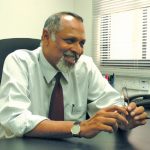-
Civic Centre: Panadura 2030
April 2012
 LOCATION – PANADURA – PUBLIC BUS STAND
LOCATION – PANADURA – PUBLIC BUS STAND
USER – ENTHUSIAISTIC CITIZENS OF PANADURA
CLIENT – PANADURA URBAN COUNCIL
AMINAH MARIKA – CDP 2011/12
“No man is an Island entire of itself ”
Meditation XVII, 1624: John Donne
Panadura grew with a distinct and unique character, in consonance with the three identifiable stages of Sri Lanka’s culture: the immigration of persons into the country, the onset of trade relations between Sri Lanka and other countries, and colonization, the last of which stilted the development of indigenous identity. The tension created by the introduction of the last of these factors was brought to public attention by the ‘Panaduravadaya’, a great religious debate that took place in Panadura during British rule. Through this, reconciliation and adaptation took place in this location. However, this process was disturbed and disrupted further by the advent of the open economy in 1977, creating changes too drastic and sudden to be merged into the existing social fabric, creating a rift and a divide that exists to this day. It is an inability for the society to function as a cohesive whole that pervades this town presently.
In order to achieve “cultural change” the public need to identify the importance of interacting with, depending on and complimenting their fellow beings.
The focus was to (concept)
“tap on the positive/negative MEMES in Panadura to rebuild a connected society.”
What is its Main Function?
The main function of the civic centre is to make society a part of decision making, to get people involved in the discourse that precedes change, and to thus ensure that the voice of the stakeholders do not go unnoticed.
This civic centre was designed in order to facilitate and encourage much needed interaction between people. The pivotal feature is the open-to-sky oratory theatre located in the centre of the building, overlooked by a ramp that tapers around the building spiraling upwards and acting as a balcony to this space complementing it. This oratory theatre acts as a place for public events to be held, or for people to carry out discourse. Its setting is one that is both informal and unintimidating, intended to make such activities commonplace. The ramp travels both upwards and downwards, the latter leading down towards galleries that can be rented by the public for expositions of talent, or to be used in any manner they wish.
The ramp functions as a walkthrough along which vendors and street hawkers can offer their services. The civic centre thereby seeks to address some of the core issues that plague Panadura, such as unemployment, poverty and the eviction of slum-dwellers.
Upon entering the premises, the feature that strikes the sculpture garden, which is open to the public to hone their workmanship, and to possibly display their creations as well. The youth centre which is below the cinema is made available in order to create interaction through entertainment. It will be accessorized with musical instruments, board games and the like, and includes a cyber café and a stationery shop/communication centre. The office and front desk are also situated in the ground floor.
Above the youth centre is the cinema, the outside wall of which constitutes a media wall that is wired to display advertisements as well as both local and international news. The section of the ramp leading up to the cinema is a ‘walk of contribution’, so called because it has kinetic paving that produces energy upon people treading on it, and also because the media wall lends itself to creating a need for news and information, in turn leading to an opportunity that newspaper vendors can utilize. The cinema protrudes over Jayatilake Mawatha.
WALK THROUGH …………



















